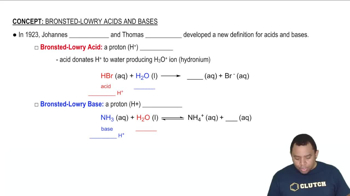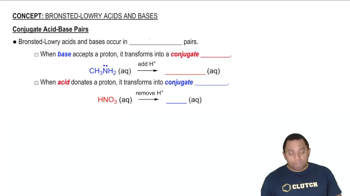Here are the essential concepts you must grasp in order to answer the question correctly.
Acid-Base Theory
Acid-base theory explains the behavior of acids and bases in chemical reactions. According to the Brønsted-Lowry theory, an acid is a proton donor, while a base is a proton acceptor. Understanding this concept is crucial for determining the strength of bases, as stronger bases are more effective at accepting protons.
Recommended video:
Bronsted-Lowry Acid-Base Theory
Conjugate Acid-Base Pairs
Conjugate acid-base pairs consist of two species that differ by the presence of a proton. For example, when a base accepts a proton, it forms its conjugate acid. In the case of NO2– and NO3–, recognizing their conjugate pairs helps in assessing their relative strengths as bases, as the stability of the conjugate acid influences the base's strength.
Recommended video:
Conjugate Acid-Base Pairs
Resonance and Stability
Resonance refers to the delocalization of electrons within a molecule, which can stabilize the structure. In the context of NO2– and NO3–, the resonance structures of these anions affect their stability and, consequently, their basicity. A more stable anion is typically a weaker base, as it is less likely to accept a proton.
Recommended video:

 Verified step by step guidance
Verified step by step guidance


